Applied Physics

The structural components of advanced reactors such as the sodium fast reactor and the traveling wave nuclear reactor must be able to withstand the extreme levels of radioactivity from the fission reaction itself, at temperatures well above 400 Celsius. Standard tests of such components are expensive, require increasingly rare test reactors and test periods that are impractical. In addition, the samples themselves also become radioactive making subsequent studies and examination time consuming and expensive.
Nonetheless, understanding how these structural components are affected by…

Researchers have created highly focused pathways that can channel electricity through the atmosphere.
It's not a new idea, Nikola Tesla worked on powering wireless lamps using electrostatic induction, but the new technique can potentially direct electricity up to 30 feet away, shattering previous distance records.
It may also finally put us on the path to channeling lightning with laser power.
The team used a femtosecond laser to create a thin column of plasma – a special charged state of matter – in the air between two electrodes. A femtosecond is one millionth of a billionth of a…
It’s true. Here’s my 555 Guituner circuit: go to 50 – 555 circuits web page on talkingelectronics.com and search for “guitar tuner” and you will find my circuit. Actually they’ve modified it slightly. You can review my Guituner article here. My 555 Guituner circuit looked like this:
Their circuit looks like this:
To make things a little clearer, I’ve simplified the diagram to this:
The only difference is they left out the power switch, the 100K resistor, and the 68K resistor. They also used my picture—but it’s a little different too. Here’s the picture I shot:
Here’s the…
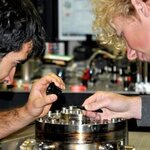
Laser physicists have found a way to make atomic-force microscope probes 20 times more sensitive, using laser beams to cool a nanowire probe to minus 265 degrees Celsius.
Atomic force microscopes achieve extraordinarily sensitivity measurements of microscopic features by scanning a wire probe over a surface.
The technique makes it capable of detecting forces as small as the weight of an individual virus.
The development could be used to improve the resolution of atomic-force microscopes, which are the state-of-the-art tool for measuring nanoscopic structures and the tiny forces between…
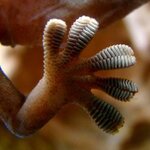
If you've ever spent any time watching a gecko, you've been impressed by their uncanny ability to adhere to any surface - including upside down on ceilings.
A new study in the Journal of Applied Physics reveals that the little lizards can turn the "stickiness" of toe hairs on the bottom of their feet on and off, which enables them to run at great speeds or even cling to ceilings without expending much energy. Geckos, as well as spiders and insects, have independently evolved the same adhesion system mechanism and have been using it for millions of years.
"Since the…
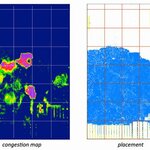
11 years ago, DARPA predicted that there was a physics-induced train wreck coming straight at the computer chip industry; the limits of what electricity and existing materials can do. Even then, quantum computers were touted as the answer, with black box magic occurring between the existing and the vision.
Instead of relying on magic, it was said that computers would have to start getting bigger again if performance was going to continue to increase. And in many ways that has happened. Supercomputers are now mostly giant racks of ordinary CPUs, but the market also lowered its expectations.…
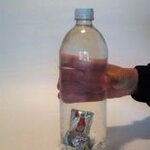
You can easily build a Cartesian diver toy using an empty one liter soda bottle (with the label torn off), a ketchup packet, and tap water. You may want to have a few ketchup packets on hand and put them in a cup of water to see if they sink or float. Keep the one that floats and use the rest for your French fries.
Remove the cap from your empty soda bottle and insert the ketchup packet. Fill the soda bottle all the way to the top with tap water and screw the cap back on the soda bottle tight. The ketchup packet will be floating at the top of the bottle. Squeeze the bottle and the packet…

Materials that are firmly bonded together with epoxy and other tough adhesives are ubiquitous in modern life — from crowns on teeth to modern composites used in construction. Yet it has proved remarkably difficult to study how these bonds fracture and fail, and how to make them more resistant to such failures.
Now researchers at MIT have found a way to study these bonding failures directly, revealing the crucial role of moisture in setting the stage for failure.
"The bonding problem is a general problem that is encountered in many disciplines, especially in medicine and dentistry," says…
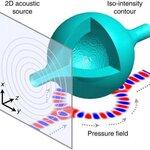
There's a new wave of sound on the horizon carrying with it a broad scope of tantalizing potential applications, including advanced ultrasonic imaging and therapy, acoustic cloaking, and levitation and particle manipulation. Researchers with the Lawrence Berkeley National Laboratory (Berkeley Lab) have developed a technique for generating acoustic bottles in open air that can bend the paths of sound waves along prescribed convex trajectories.
Sound waves move much like light waves. They travel on a straight path but this path - through reflection, diffraction or refraction - can be bent. This…
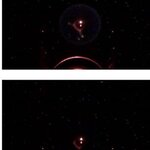
If you have watched the NASA channel recently, you might have witnessed a series of experiments regarding flames.
On the surface, pardon the pun, it may have seemed like a minor thing, but how flames behave outside our atmosphere has led to discovery of a new type of cool burning flames. A better understanding of the cool flames' chemistry could help improve internal combustion engines in cars, for example by developing homogenous-charge compression ignition.
This technology is not currently available in cars. But it could potentially lead to engines that burn fuel at cooler…